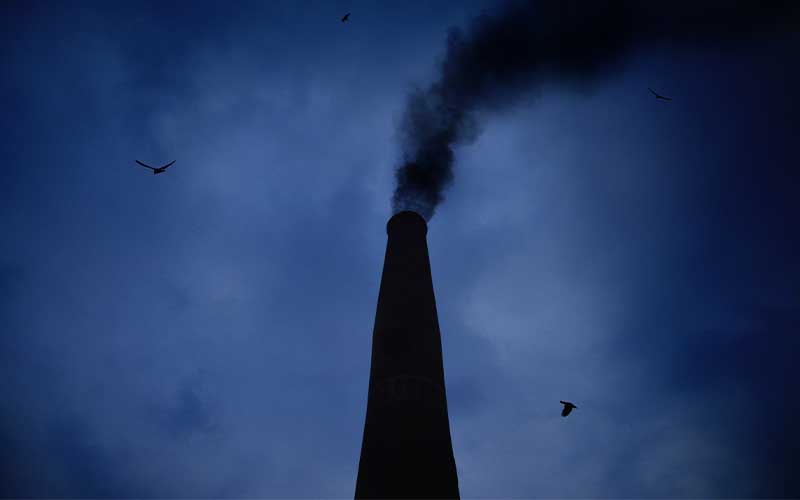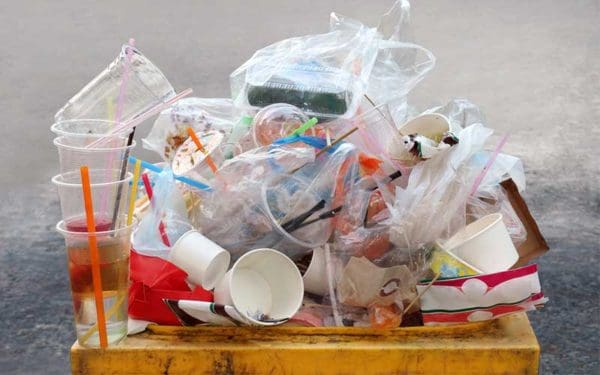
Incinerator emissions are polluting our air and poisoning our communities. Photo: koushik das via Unsplash.
Every day across New England, waste incinerators spew emissions containing toxic pollutants like dioxins, lead, and mercury into the air. They get away with this because clean air laws often favor polluters instead of the people they’re supposed to protect.
In fact, trash burners can often blow right past their mandated emissions limits – legally. That’s because there’s no requirement for incinerators to comply with emissions rules when starting up, shutting down, or performing maintenance. So, these facilities – the majority of which are located in environmental justice communities – can knowingly and legally spew toxics into the air at unsafe levels.
But, if clean air laws protected communities like they’re supposed to, these toxic facilities couldn’t operate in the first place. So, the only way to stop incinerators from polluting the air and poisoning communities is to shut them down completely.
To move toward a future without dangerous incinerators, we need to bust common myths about the laws that supposedly make them safe. Then, we can look past this outdated way of managing our trash and push towards safe, innovative, zero-waste solutions instead.
Busted: The Clean Air Act Protects Vulnerable Communities Where Trash Burners are Located
Waste incinerators burden communities with dangerous air emissions – and the Environmental Protection Agency and state environmental agencies, know it.
The federal Clean Air Act regulates every incinerator in New England because they are large sources of pollution. That means they must have emissions permits, usually issued by state environmental agencies, to operate. These permits should limit the dangerous pollutants that incinerators can spew into the air. But, as we’ve seen time and time again, state environmental agencies don’t always implement and enforce the Clean Air Act in ways that actually protect public health and the environment.
The pollution limits in an operating permit are based primarily on available technology and its ability to control the amount of hazardous pollutants released into the air. But pollution control technology can be expensive. So the Clean Air Act allows polluters, like incinerators, to avoid more protective emissions limits if complying with those limits is “overly burdensome,” financially, for the companies that operate these facilities. In this way, the Clean Air Act puts the financial interests of polluters before the health and safety of people that live nearby.
What’s more, Environmental Justice communities have historically been excluded from this permitting process. This has resulted in waste incinerators that:
- are predominantly located in communities of color and low-income communities, and
- have emissions limits that favor the trash burners, not the people forced to live in their polluting shadows.
Some of the pollutants emitted by these trash burners, especially lead and mercury, are unsafe to breathe – at any level. So, the fact that incinerators in Saugus, Massachusetts, and Hartford and Bridgeport, Connecticut, can spew any amount of lead or mercury into communities speaks volumes about the Clean Air Act’s priorities.
Busted: Incinerators Comply with Emissions Limits 24/7
Even if emissions limits were adequately protective, many situations allow incinerators to violate limits without so much as a slap on the wrist.
For example, there’s no requirement for New England’s incinerators to comply with emissions limits during startups, shutdowns, or malfunctions. That means every time one of these trash burners gets turned on or off – whether scheduled or as part of a breakdown – it’s likely spewing out even higher levels of toxics, which go unchecked.
What’s worse is that these startups, shutdowns, and malfunctions are more and more common as New England’s incinerators age. All 16 of the region’s trash burners are more than 20 years old. And 13 of them have been burning for more than 30 years – well past their life expectancy. The more these incinerators break down or shut down for maintenance, the more they put communities at risk from exposure to dangerous emissions.
Busted: Incinerator Facilities Continuously Monitor Emissions
Although New England incinerators are sometimes required to comply with emissions limits for lead, mercury, and dioxins when burning trash, their operating permits don’t require continuous monitoring of these dangerous pollutants.
Instead, trash burners estimate levels of hazardous air pollutants based on operating conditions at the incinerator. Performance tests – or “stack testing” – confirm these estimates, but only once every one to five years. The Hartford and Bridgeport incinerators, which combined burn more than two-thirds of Connecticut’s trash, base their emissions estimates on stack testing that is performed once per year. Meanwhile, Hartford and Bridgeport residents have some of Connecticut’s highest blood lead levels and asthma rates.
Some cities, like Baltimore, have tried to require waste incinerators to monitor hazardous emissions continuously. But a federal court ruling struck down Baltimore’s Clean Air Act. That, and a settlement between Baltimore and Wheelabrator – owner of the city’s incinerator – have thrown a wrench in plans to tighten emissions controls at the local level, including here in New England.
Fact: Emissions Limits Don’t Fully Protect Us, But Zero Waste Solutions Can
If the Clean Air Act, state regulations, and operating permits aren’t enough, then what can we do to help protect communities from incinerator emissions? We can start by significantly reducing the amount of waste produced; if there is no trash to burn, incinerators cannot poison our communities.
As in most states, Connecticut and Massachusetts burn more than 75% of trash that is either compostable organic waste or materials that are or should be recyclable. Zero waste solutions, like composting, producer responsibility for packaging, pay-as-you-throw programs, and bottle-return systems can cut the amount of trash we burn dramatically.
But we must act now. Weak emissions limits with too many loopholes are not enough to protect those forced to live near incinerators. The only safe incinerator is a closed incinerator. Together, we must make incineration a thing of the past in Hartford, Bridgeport, Saugus, and all other New England communities.
Take action now – use our Zero Waste Activism Toolkit to help us phase out our toxic waste systems.



